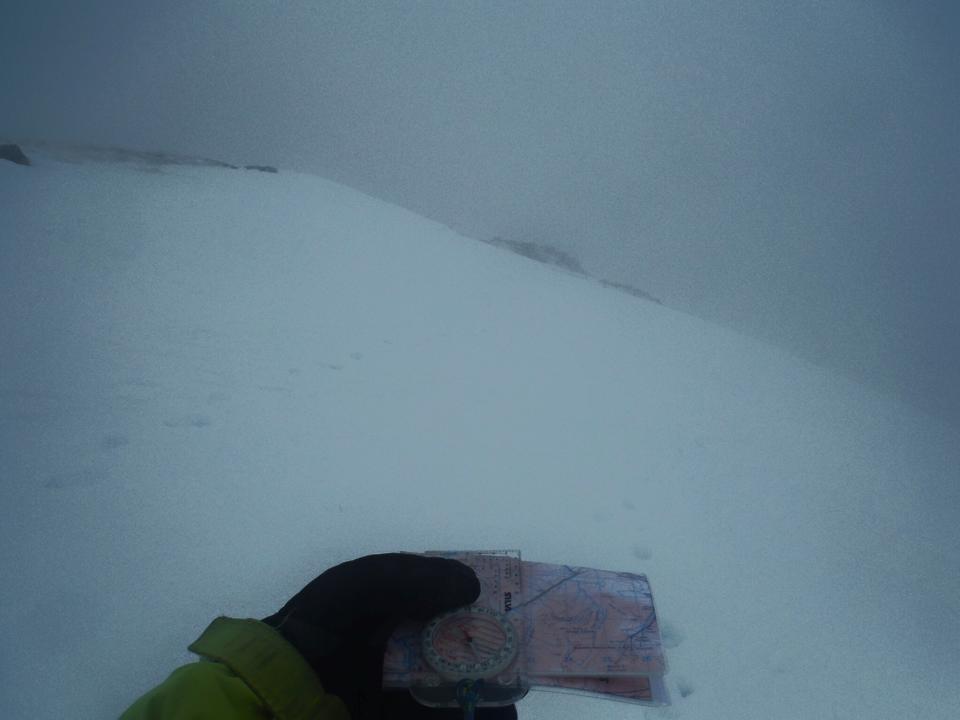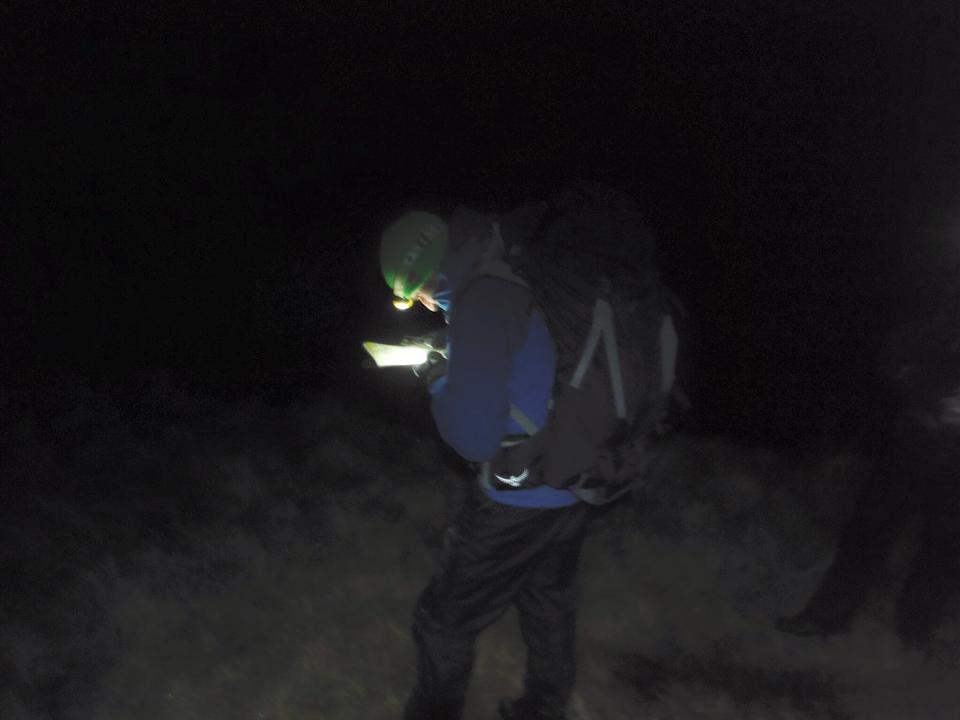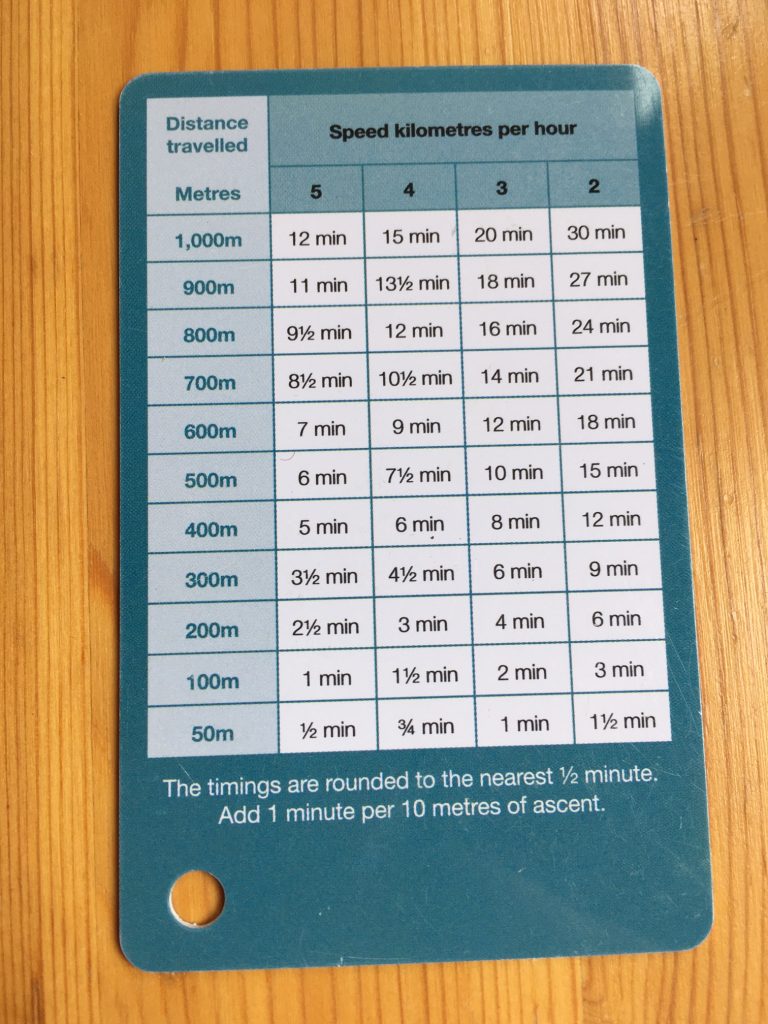Navigation Skills Checklist
Here’s a whistle stop tour of some of the vital Navigation Skills you may need in the hills, summer or winter, to be safe and have a great day! Be honest with yourself – Do you really know how to do the following?:
- Orientate the map?
- Understand what’s on the map? I.e.- refer to the map’s key!
- Take a bearing?
- Have an idea of how to plan a route?
If the answer to any of the above is a no, check out the brilliant book from Mountain Training “Navigation in the Mountains”. If however, you’re fairly confident with the basic navigation skills, let look at putting it all into practice to a higher level…
Specific Navigation Skills
Firstly, lets not over-cook it, if you can see where you’re going, the visibility is good and you can easily account for the challenges along the way – maybe you don’t need to get the compass out!
For any navigation leg, you need to know where you are, and where you want to go (this may need to be super specific in winter near a corniced edge for instance). You’ll need to come up with some sort of plan for your journey between these points. There are many skills involved here, so I like to think about all the “D’s”…
- Direction – Which way do I need to go?!
- Distance/Duration – How far am I going and how long will it take me?
- Description – What will I see along the way?
- Destination – What should I see when I get there?
- Dangers – What dangers are there along my intended route?
What exact skills you utilise and how stringently you apply them depend on the weather, visibility, the terrain and your personal experience…

Navigation Skills need to be strong in Winter!
Breaking the Navigation Skills down…
Direction – Orientate the map. Do you need to use the compass to take a bearing or is the visibility good enough to rely on the features you can see? If walking on a bearing, take your time, be accurate and trust the compass – provided you’ve taken the correct bearing and are starting from the correct point! Top Tips – Watch your compass on metal stuff, smart phones and with some metallic rock types and carry a spare compass…
Distance/Duration – Learn what different walking paces feel like (3kph/4kph/5kph etc), be accurate measuring distance with the compass, learn your pacing on different types of terrain and carry a timing card like this:
If you’re being really precise and micro-navving in zero visibility, pacing is probably the best bet, but on long legs and in nicer weather/visibility, maybe timing is the way to go. Top Tips – Carry a watch with a stop-watch on. Attach 5 small toggles onto your compass cord to use to count sets of 100m paces so you don’t forget mid-way!
Description – Quite possibly the most useful navigation skill. Building a map memory so you can plan your leg and then stick the map away makes your life so much easier.. Thumb the map as you go (keep your thumb on your location as you move), making quick relocation much easier. Tick off features along the way. Contour features never lie, man made features may change. Have some Catching features to stop you going too far.
Destination – have an idea of what you will see when you get to your destination so you know what to look out for. Make sure all 4 cardinal points (N/S/E/W) match where you are – if just 1 doesn’t fit then it’s not your destination! Don’t make stuff match if it’s not quite right…
Dangers – Cliffs, rivers, cornices, avalanche prone slopes – you get the idea! Stay away from them ideally, but know how to navigate around them if needs be… (Boxing, Dog-Legging).
Now Practice those Navigation Skills!
Everyone gets lost at some point, no matter how good a navigator they are. It’s usually down to rushing, not making a plan or not sticking to it, or simply by being inaccurate. The only way to get these navigation skills dialed is to get out and practice, apply them in context for every walk you do. Don’t overcook it but going out on a nice day and practicing your bearings and pacing will make it less of an ordeal when you have to use the skills in anger! Go somewhere safe, practice, get lost and re-locate. Work with a partner to sound each other out, give each other legs, if you have one take a GPS or use a phone with a GPS (Viewranger or OS Maps Apps) on to back you up (but never totally rely on them!!) Most importantly, have fun!
There are of-course more navigation skills and techniques that you can learn, but take your time to build solid foundations so it becomes second nature, then when you really need to use the skills, it’ll give you that comfort zone to work from! Remember the excellent book “Navigation in the Mountains”, it goes into more detail on the navigation skills I’ve mentioned and more besides. If you fancy a course looking at either beginners navigation skills, advanced navigation, micro-nav or even night navigation, check out our Navigation Skills Courses…

Teaching Night Navigation Skills on a Mountain Leader Training Course
Why use The Climbing Company for a Navigation Course?
Holding the WMCI (Winter Mountaineering and Climbing Instructor) I hold the UKs highest possible qualification in Mountain based activities. You are assured of the best, most professional coaching, leadership and guiding on any day (or night!) out with us… We are full members of the Association of Mountaineering Instructors and Course Providers for Mountain Training. Having put the hard work in to gaining the necessary skills, travelling all over the world to work, climb and mountaineer, I have a great in-depth knowledge on the subject and have a brain full of hints and tips to pass on to you!



